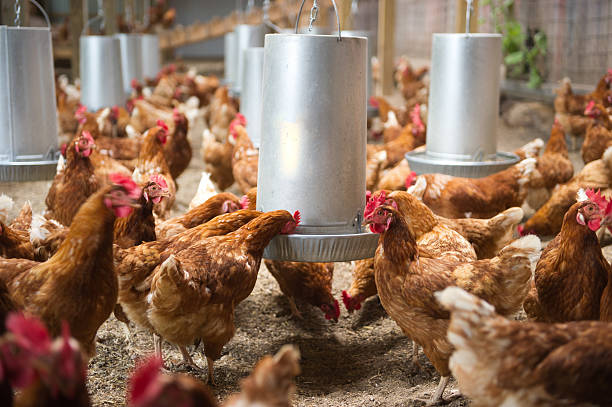
By Hanks Saisai, Technical Advisor: Crops & Poultry
Raising chickens is rapidly becoming a lucrative farming enterprise that provides affordable protein products to households all over the country. However, there are critical factors that farmers must adhere to and understand to ensure success.
Firstly, to achieve success in chicken farming, housing is the most critical factor that must be prioritized by farmers. Chicken coops must be designed in manner that maintains comfort and ensures the birds protection from weather elements (rain, wind, sun, and heat) and predators such as hawks, snakes, caracals, and jackals. Another consideration when designing the chicken coop is maintaining the recommended stocking densities to minimize overcrowding. In a naturally ventilated chicken house where a farmer relies on environmental weather elements such as wind to keep the house cool, it is advisable that a stocking density of 12 chickens per square meter is maintained. In a placement house where chicks are raised, a stocking density of 55 to 60 chicks per square meter is recommended.
Moreover, each square meter (1 m2) must have a drinker and a feeder for the chickens to have access to sufficient water and feed. This will enable farmers to build chicken coops that can comfortably accommodate their chicken flock. The second factor that is of vital consideration when farming with chickens, is the feed composition. Understanding the nutritional requirements of the types of chickens you are farming with is vital for a successful chicken enterprise. When raising meat chickens (broilers) it is essential to identify the feed requirements per chicken on a daily basis. For instance, from 1 to 14 days old, broilers require 60 grams of Broiler Starter mash per day per chicken and as they grow older, the farmer must increase the feed to at least 110 grams (broiler grower mash) per chicken per day (day 15 to day 37).
During the last 5 days (day 38 to day 42) the chickens can be fed with Broiler finisher mash for maximum output. The chickens must be fed with at least 150 grams per bird per day. When farming with Layers, it is essential to feed the hens with 110 grams (per day per hen) of layer mash during summer and, 130 grams in winter (per day per hen) daily. When farming with dual purpose chickens, it is advisable to feed them with poultry mix, which is a composition of sunflower seeds (protein base) and yellow maize (energy base). Moreover, another critical consideration is the provision of water as an essential nutrient to successfully raise chickens. In areas where average temperatures are around 32oc, the chickens must drink at least 220ml of water per chicken per day.
The third factor that can determine success when operating a chicken enterprise is the production system in place. A production system refers to the way a farmer makes use of his available resources to meet enterprise demands. When rearing chickens, farmers have three production system options that they can implement. The free range production system is often common in rural setups where chickens are kept at a minimal cost. The farmer only incurs the cost of buying the birds, but does not spend money on shelter, feed, veterinary drugs (vaccines, supplements, antibiotics, etc.). The downside of this set up is that chickens are exposed to predators and weather elements.
The Semiintensive system is another option that a farmer can choose to implement. In this system, shelter is provided to the chickens, as well as feed rations and treatment when a disease or pest outbreak is suspected. When feed runs out, the chickens are allowed to forage around the homestead. Finally, the last production system that can be implemented by farmers is the intensive production system. In this system, the chickens are kept in the chicken coop throughout the entire production cycle where they are protected against weather elements, predators, diseases and are fed with adequate amounts of feed. This system has a higher cost of production associated with raising the chickens, however, chickens are more productive in this set up.
Overall, achieving success in chicken farming is highly dependent on the housing, feed, and production system implemented by the farmer. Farmers are therefore urged to review and consider what works best for them, but most importantly, farmers must consider the well-being of the chickens for a successful enterprise.









